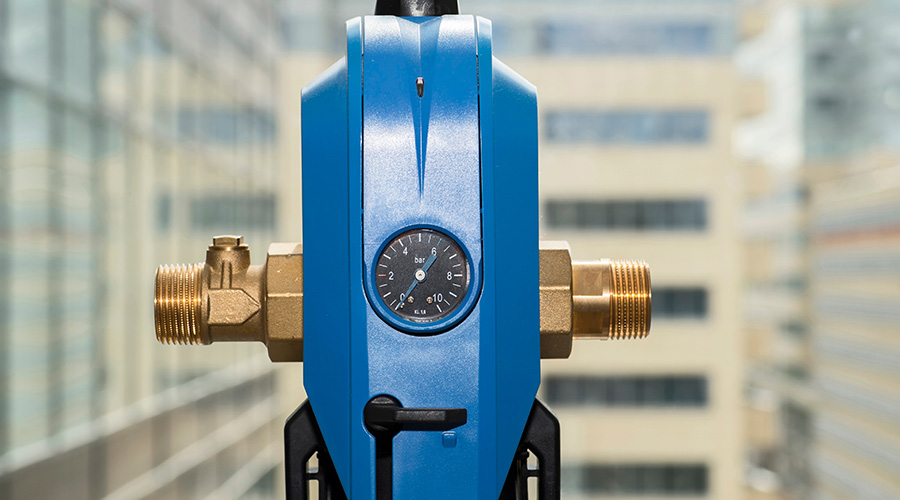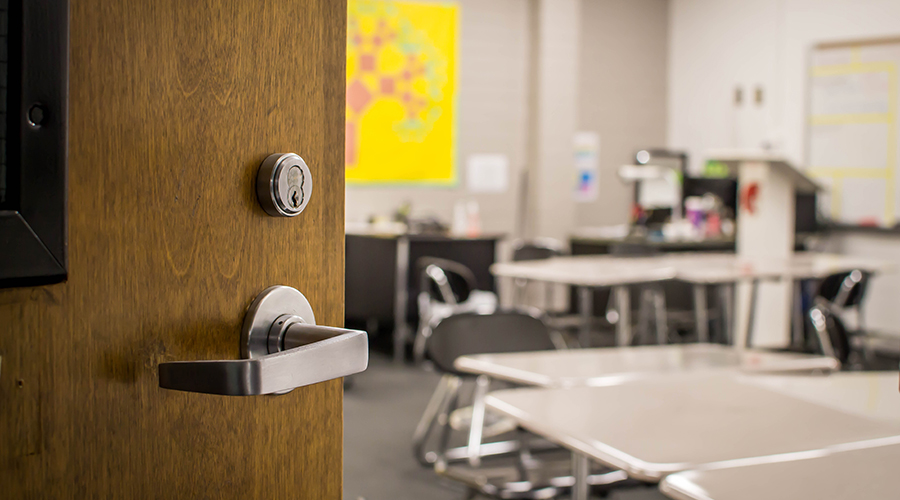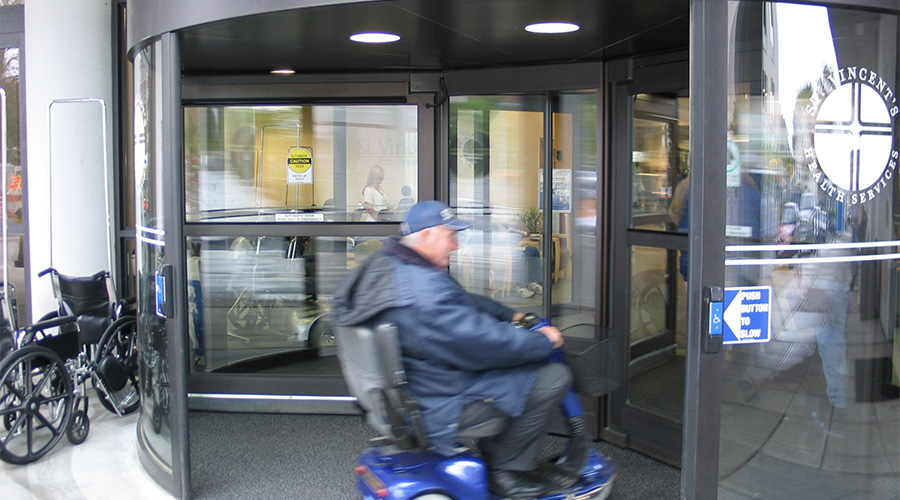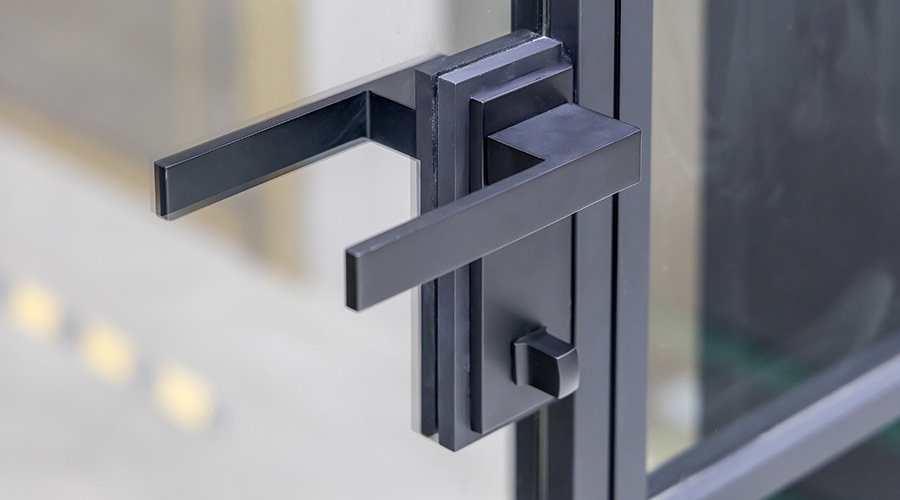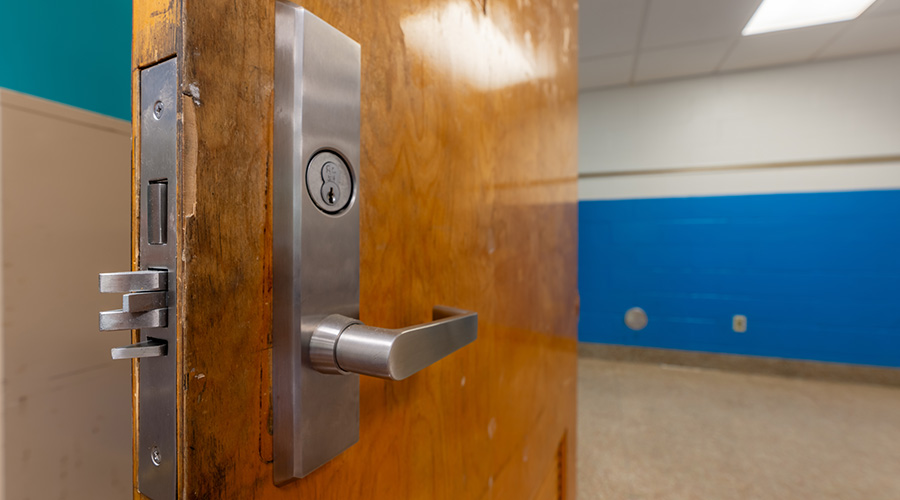Doors and Hardware Evolve to Meet New-Generation Challenges
Active shooters, COVID-19 and Big Data have affected the way facility executives and managers approach decisions on door hardware, security and access control.
What a difference a decade makes.
Few people could have predicted that events of the last 10 years would have such a profound impact on institutional and commercial facilities. From the COVID-19 pandemic and active shooter events to the rise of Big Data in facilities, external events have affected the way buildings are designed and operated.
Among the areas of facilities most affected are two that many people take for granted — entrances and exits. As a result, building owners and facility managers face a much different scenario when it comes to managing access to their facilities and protecting the health and safety of occupants.
Doors and hardware evolve
Managing access and security in facilities is more complex than just a decade ago, so the changes in products and processes show up in a number of different ways. One change involves the products and technology, which have evolved to meet a new generation of issues, including design.
“We’ve seen an increase in the number of electric strike locks with the security perspective — the way that they’re designed as a unit to be able to go into the door, the way the wiring is able to route through the door to the electric lock,” says Jeremy Baumann, chief operations officer at Corporate Security Advisors. “We’re seeing a lot more of those types of designs built into the doors themselves so that we’re not trying to have to do some custom drilling on a door to fish a wire through. The more secure hardware and locking mechanisms are not an afterthought but built into the designs of the doors.”
The growing scrutiny of door hardware and access control means that owners and managers involved in overseeing these systems who once operated more independently now are likely to work more closely with a team of interested parties.
“Generally, if they’ve been long-time building owners, they understand how this all integrates together, that’s the case,” says Sean Wicks, assistant vice president for building technology systems with WSP. “In this case, you would have security, which is the physical security designer, you have the architect who’s specifying the door hardware. Then you have the client who actually has a key control system, and they understand what hardware they like to use.
“If all three of those don’t work together during the design process, construction becomes very difficult. Door hardware is almost an afterthought. Somebody will create a door hardware schedule. It gets done once, but as the building and the design progresses, the hardware schedules sometimes don’t.”
As owners seek better insights into facility performance and operations, their attention more often is turning to the greater availability of data from doors and access control systems that can help them make more informed decisions on building operations.
“The biggest thing I’ve seen — and this isn’t necessarily involving door hardware — is the move to get insights from door accesses or door uses to improve the visitor experience, to regulate pedestrian flow and space occupancy, to adjust building use of lighting and power,” says Michael Gips, managing director for enterprise security risk management with Kroll. “When access control becomes part of the (property technology) software suite that’s used in smart buildings, you can leverage that to make improvements in the user experience and how the building functions. You can derive data conclusions.
"The more data you can pull — and everything is about data nowadays — that’s driving sort of access control as part of the prop tech or smart building suite. If you can connect access control to other functionalities, that makes it safer. It gives added value.”
Gips says changes to codes and standards in recent years also have affected the safety and security decisions owners and managers face. As an example, he points to revisions to the automatic door opener requirements in the 2021 and 2024 International Building Codes, which have incorporated requirements for automatic doors in some occupancies.
“There’s an ADA code, and it has been adopted by the ICC, that requires that 60 percent of public accesses have to be power operated or low power operated, which means when you wave your hand in front of an infrared sensor, the door opens,” Gips says. “Or you push a button and the door opens. You don’t have to use a lot of force. That’s an example of codes, regulations and requirements dictating the type of door.”
Dan Hounsell is senior editor for the facilities market. He has more than 30 years of experience writing about facilities maintenance, engineering and management.
Related Topics:






